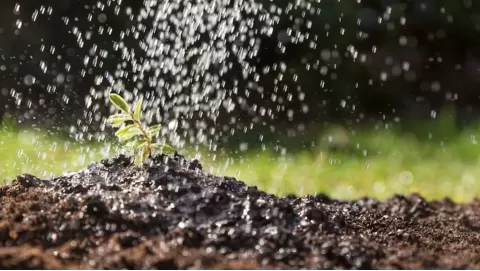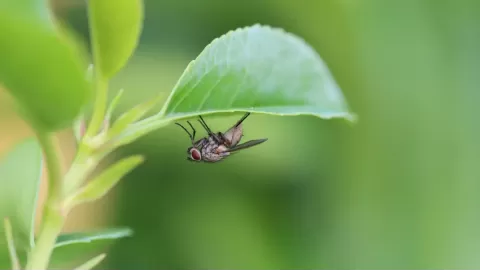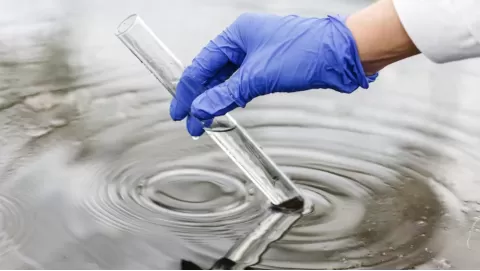
Choosing the right lawn fertilizer for a lush, green lawn
Mowing the grass and watering the lawn will not keep it as green and lush as some homeowners want. The most vital aspect of lawn care is giving the plants nutrients through fertilization. Using the best lawn fertilizer provides vital nutrients to help you grow a lush, healthy, and tough lawn all season. This article is going to help you choose the right lawn fertilizer, which types are out there, its nutrient needs, how to apply it, and at what time.
Overview
Lawn fertilizers are formulated to provide key nutrients that promote healthy lawn growth. The main nutrients required for lawns are nitrogen (N), phosphorus (P), and potassium (K), commonly known as N-P-K. Each of these nutrients serves a different purpose in keeping grass healthy:
- Nitrogen (N): This will contribute to plant leaf and stem growth, making it an important contributor to dark green foliage. It is the number one nutrient you need for a healthy lawn.
- Phosphorus (P): Important for root and energy transfer, phosphorus helps develop deep roots and overall plant vigor.
- Potassium (K): This nutrient is crucial for all-around plant vigor and contributes to disease resistance, drought tolerance, and winter hardiness.
Types of lawn fertilizers
Fertilisers have an N-P-K ratio, which describes the percentage of each nutrient present. A fertilizer displaying 10-10-10 means the compound consists of 10% nitrogen, 10% phosphorus and 10% potassium, for example. There are several types of grass fertilizers out there, each with its own pros and cons.
1. Granular Fertilizers
Granular fertilizers are dry, pellet-like products that you sprinkle over a lawn. They fall into two broad categories: quick-release or slow-release.
Quick-Release Granular Fertilizers: Nutrients are released immediately with this type, so associated greening and growth is rapid. But they must be used more frequently and can burn nutrients if applied in excess.
Slow-Release Granular Fertilizers: Provide a continuous supply of nutrients. They have much lower nutrient burn and less applications, so a good option for homeowners.
2. Liquid Fertilizers
Liquid fertilizers are generally applied with a hose-end sprayer or dedicated sprayer for this type of fertilizer and are quickly absorbed by the grass for results that can be seen in almost no time. If you need to spot treat or correct nutrient deficiencies, they are ideal. Those have to be applied more often than granular fertilizers.
3. Organic Fertilizers
Organic fertilizers are based on natural things, such as compost, manure, and fish emulsion. They break down, and in breaking down, they liberate nutrients that nurture the earth and power microbial activity. Until now, there weren’t many sustainable, organic fertilizer options available to farmers that wouldn’t wash away and contribute to nutrient runoff. But they may not be as easy to use as synthetic fertilizers, which can offer near-instant gratification.
4. Synthetic Fertilizers
Synthetic fertilizers, in contrast, are made up of chemical compounds, meaning they provide a more literal combination of nutrients. They come as both granules and liquids — potent and dependable. But they also cause environmental pollution if we do not treat that waste properly.
Choosing the right fertilizer for your lawn
Grass fertilizer application is determined by lawn type, soil condition, and lawn care objectives. Once you determine what kind of grass you have, you can find a fertilizer with the right nutrients.
1. Identify Your Grass Type
Different grass species, hits and misses, can be a process or an experiment. Common grass types include:
Northern Cool-Season Grasses: Fescue and Ryegrass are engineered for northern climates with active growth in spring and fall
Warm-Season Grasses: Bermuda grass and St. Augustine are in the category of warm-season grasses that love warmer climates and are active in growth during the summer.
2. Test Your Soil
A soil test shows your soil pH, the nutrients in the soil and its organic matter content. You can buy soil-testing kits at garden centers, or you can mail a soil sample to your local agricultural extension service for analysis. You can use the results to pick a fertiliser that either corrects the nutrient deficiencies and balances the soil pH.
The scale of soil pH ranges from 0-14 and it is used to express the degree of acidity or alkalinity of the soil. Seven on the pH scale is neutral, so anything below 7 means you have acidic soil, while anything above 7 means you have alkaline soil. Soil pH is important because it can affect the amount of nutrients available to the plants and the health of the soil microorganisms. Most plants prefer slightly acidic to neutral pH levels (6.0 to 7.0), where key nutrients such as nitrogen, phosphorus, and potassium are most chelated for absorption.
Plants may suffer from nutrient deficiency when the pH is high or low, resulting in nutrients being less available to the plants and leading to poor plant growth. Soil structure is influenced by not only excessive acidity or alkalinity but also microbial action. Soil pH (proper pH is a fundamental requirement for plant growth), therefore, will need periodic testing (and adjusting for this reason).
3. Consider Your Lawn's Nutrient Needs
Various stages of grass growth require different proportions of nutrients. For example, in early spring you want a nitrogen-heavy fertilizer to encourage rapid green-up and growth, late spring to early summer you’ll want a balanced fertilizer to encourage growth and root development, and late summer to early fall for best results you want a potassium-heavy fertilizer for stress tolerance and winter preparation.
4. Choose Between Organic and Synthetic Fertilizers
The choice between organic and synthetic fertilizers is guided by the philosophy you choose to follow in your lawn care and the environmental impact you are willing to take. Organic fertilizers improve soil health and are environment-friendly, while synthetic fertilizers provide fast and reliable results.
Related: Queen of the Night Flower care: Growing epiphyllum oxypetalum indoors
Fertilizer application methods
Lawn fertilizers require proper application in order to be effective. These are some common ways of applying.
1. Broadcast Spreaders
Broadcast spreaders, also known as rotary spreaders, distribute granular fertilizer evenly across the lawn. They are simple to use and cover large areas in a short time. Yet, they may need to be calibrated to enable uniform distribution.
2. Drop Spreaders
For these, there are drop spreaders, which release fertilizer directly beneath the spreader for more control of the application. They are great for small lawns and localised areas that need fertilisation.
3. Hose-End Sprayers
Some hose-end sprayers are used for watering liquid fertilizers. They connect directly to a garden hose and mix the fertilizer with water as you spray. Hose-end sprayers are quality for spot treatments and foliar feeding.
Timing your fertilizer applications
Timing of your fertilizer applications is important for creating a healthy growing environment and avoiding nutrient runoff. Applying fertilizers at the right time ensures that your lawn gets the required nutrients at the needed time so that they can be easily absorbed and utilized. The timing of your lawn's fertiliser applications can improve just about every trait of your lawn, from overall lawn health to pest resistance.
1. Early Spring
Apply a high-nitrogen fertilizer in early spring as the grass begins to grow. This will help promote rapid green-up and good early season growth.
2. Late Spring to Early Summer
In late spring, apply a balanced fertilizer to promote further growth and root development. That helps the grass endure the strains of summer heat.
3. Late Summer to Early Fall
In late summer or early fall, apply a high-potassium fertilizer. Potassium increases stress tolerance and helps prepare the grass for winter dormancy.
4. Late Fall
In areas with cold winters, fertilize with a winterizer fertilizer in the late fall. Winterizer fertilizers are high in potassium; they build energy reserves for grass in its soon-to-be dormant phase.
Environmental considerations
Fertilizer is simply one of the many suggestions used for the safeguarding of the environment. Here are some tips for cutting the environmental impacts of lawn fertilizing.
Follow the Manufacturer's Instructions: Apply according to the application rates and directions listed on the fertilizer package.
Avoid Over-Fertilization: Excess fertilizers can cause nutrient runoff and polluted water bodies. Use only what you need for healthy growth.
Use Long-Lasting Fertilizers: Fertilizers that release nutrients over time.
Water Appropriately: After you fertilize your lawn, make sure to water it; the water will help the nutrients seep into the ground. Do not over-water, as you will trigger runoff.
Clean Up Spills: Sweep spilled fertilizer from driveways, sidewalks, and other impermeable surfaces so that it doesn’t wash into storm drains.
FAQs
What is the best time to fertilize my lawn?
For cool-season grasses, these are early spring and autumn. Late spring and summer work best for warm-season grasses. Moreover, if we fertilize our lands late fall, this helps our lands better adapt to the winter weather.
How often should I feed my lawn?
Your frequency of fertilizing your lawn will depend on the type of grass and the condition of your soil, but generally, you should fertilize 2-4 times a year. A seasonal schedule in early spring, late spring, summer, and fall means your lawn will get the nutrients it needs during the year.
Can I use the same fertilizer on both my garden and lawn?
Although some fertilizers can be used for lawns and gardens, it’s important to select one designed for lawns to maintain the proper toxicity levels. Lawn fertilizers tend to be higher in nitrogen to encourage rich green growth.
Do organic fertilizers have advantages over synthetic ones?
Both have their advantages. Organic fertilizers are healthy for the soil and better for the environment, while using synthetic fertilizers gives faster and more robust results. It boils down to your grass-cutting objectives and environmental factors.
How do I tell if my lawn lacks nutrients?
Examples of nutrient deficiencies that may be present include the yellowing of the grass (nitrogen deficiency), weak roots (Phosphorus deficiency), and poor stress resistance (potassium deficiency). A soil test will tell you the exact nutrient needs of your lawn.
Can I fertilize my lawn when it rains?
A light rain can work in your favor, helping to wash the fertilizer into the soil, but a heavy rain can produce runoff that not only wastes the fertilizer but can also be harmful to the environment. Fertilizing is best done when light rain is forecast or you water your lawn lightly after you have applied fertilizer.
Do I have to water my lawn after I put down fertilizer?
Yes, you use water to wash the fertilizer into the ground so that it can reach the roots. But take care not to overwater, since runoff is possible. Light to moderate watering is best after fertilizing.
Can too much fertilizer hurt my lawn?
Excess fertilizer may lead to nutrient burn, damaging the grass and creating patches of brown. It can also lead to the runoff of nutrients, polluting these environments. Always follow recommended application rates and guidelines.
What do I need to know about lawn fertilizers?
Consider your grass type, soil condition, etc, if you have a certain end goal in mind. A soil test will tell you what nutrients are in short supply so you can select a fertilizer with the appropriate N-P-K ratio. You also must decide between synthetic and organic choices based on your environmental beliefs.
Final Thoughts
Selecting the best lawn fertilizer is a critical step to creating a lush, green lawn. With knowledge of the types of fertilizers and nutrients necessary, how to apply them correctly, and when they should all be administered to grass, you can make informed decisions that will encourage healthy grass growth and overall lawn beauty whether organic or synthetic, good fertilization practices will help you build a vibrant and resilient turf that you will enjoy for years to come.
Disclaimer: This material is for informational purposes only and should not be relied on for legal, medical, financial, or any other form of professional advice.





















